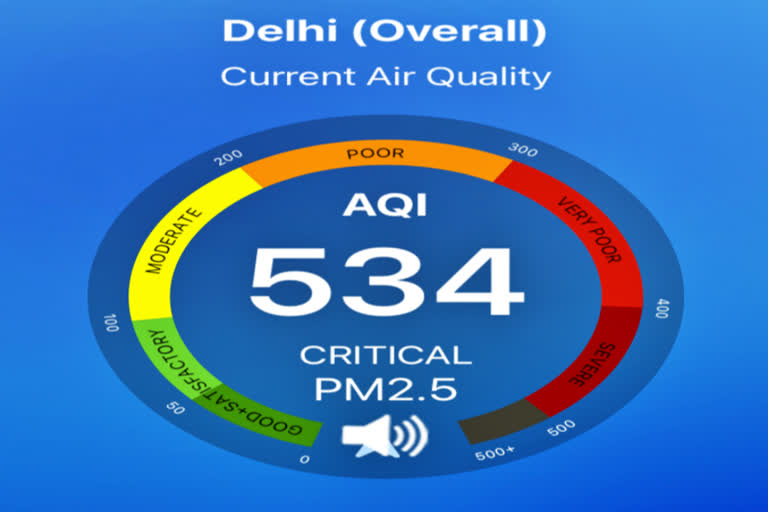New Delhi: Delhi woke up to a grey morning as an apocalyptic smog blotted out the sun from the sky and smudged landmarks from view with air quality inching closer to emergency levels on Tuesday.
Air quality monitoring stations at Mandir Marg, Punjabi Bagh, Pusa, Rohini, Patparganj, Jawaharlal Nehru Stadium, Najafgarh, Sri Aurobindo Marg and Okhla Phase 2 maxed out as air quality indexes hit the 500 mark, Central Pollution Control Board data showed.
The smog reduced the visibility to merely 300 meters in the morning affecting traffic, an official of the India Meteorological Department (IMD) said.
Delhi recorded an AQI of 487 at 9 am, which falls in the severe category. The neighbouring cities of Faridabad (474), Ghaziabad (476), Noida (490), Greater Noida (467), and Gurugram (469) also recorded severe air quality.
This is the sixth severe air day on the trot in Delhi. The city witnessed seven severe air days in November last year.
The levels of PM2.5 finer particles which can even enter the bloodstream in Delhi-NCR were 605 g/m3 at 8 am around ten times the safe limit of 60 g/m3.
PM10 levels stood at 777 microgram per cubic meter (g/m3) at 8 am, the highest since November June 14, 2018, when it surged to 847 g/m3, according to CPCB data.PM10 levels below 100 g/m3 are considered safe in India.
Also read: NGT imposes ban on sale, use of firecrackers in NCR from Nov 9 to Nov 30
If PM2.5 and PM10 levels are more than 300 g/m3 and 500 g/m3 for over 48 hours, emergency measures such ban on construction activities, entry of trucks and car rationing scheme can be implemented under the Graded Response Action Plan for Delhi-NCR notified by the Ministry of Environment and Forests in 2017.
Government agencies and experts said calm wind speeds were exacerbating the effect of stubble burning and a quick recovery is not possible unless the number of farm fires reduces drastically.
VK Soni, the head of the IMD's environment research centre, said a major improvement in Delhi-NCR's air quality was highly unlikely in the coming days.
The air quality is likely to be recorded in the upper end of the ''very poor'' category on Diwali if we discount firecrackers emissions. If people burst crackers, pollution levels can increase to 'severe'' to 'severe plus' category (emergency), he said.
The National Green Tribunal on Monday imposed a total ban on sale or use of all kinds of firecrackers in the National Capital Region (NCR) from November 9 midnight to November 30 midnight, saying "celebration by crackers is for happiness and not to celebrate deaths and diseases".
The Ministry of Earth Sciences' air quality monitor, SAFAR, said, Low dispersion condition continues in Delhi along with high fire-related intrusion. This has led to the accumulation of pollutants near the surface.
Also read: Cracker traders urge Delhi govt to clarify policy over ban
No quick recovery is expected unless a drastic reduction in fire counts takes place, it said.
SAFAR said the share of stubble burning in Delhi's PM2.5 pollution was 38 percent on Monday.
According to the IMD, Delhi recorded calm winds and a minimum temperature of 10.8 degrees Celsius on Tuesday morning. Calm winds and low temperatures trap pollutants close to the ground, while favourable wind speed helps in their dispersion.
There was moderate fog in the morning which led to smog. It reduced visibility to 300 meters at the Safdarjung and Palam weather stations, an IMD official said.
The newly-constituted Commission for Air Quality Management in National Capital Region and Adjoining Areas on Monday stressed the need to enforce existing laws, directions and SOPs to minimise air pollution on an emergency basis. It is expected to review the situation on Tuesday.
Delhi Environment Minister Gopal Rai said action will be taken against those not complying with the ban on firecrackers under the Air (Prevention and Control of Pollution) Act which included a jail term of up to six years.
PTI
Also read: Experts welcome cracker ban by NGT, says "It's time to think about clean air"



